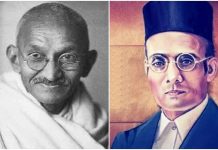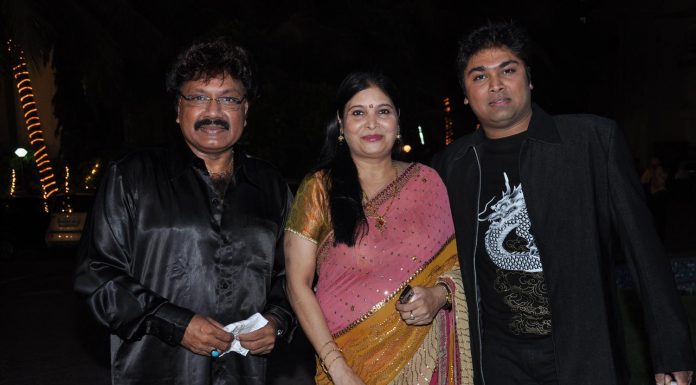
Teej, a festival deeply rooted in Hindu culture, is a celebration of monsoon and marital bliss. While it’s celebrated across various regions of India, each city adds its unique flavor to the festivities. In our city, the Teej parade is not just a tradition; it’s a vibrant celebration of cultural heritage that draws people from all walks of life. The parade, a visual spectacle, showcases the city’s rich history, traditions, and the indomitable spirit of its people.
History and Origin of Teej
Teej traces its origins back to ancient Hindu mythology, where it is believed to commemorate the union of Goddess Parvati with Lord Shiva. The festival marks the advent of the monsoon season and is observed by married women, who pray for the well-being of their husbands and a happy married life. Over the centuries, Teej has evolved from a religious observance to a grand cultural celebration, particularly in regions like Rajasthan, where the festival has deep roots.
Cultural Significance of Teej
In Indian culture, Teej symbolizes the strength of marital bonds and the power of love and devotion. The festival is celebrated with various rituals, including fasting, praying, and singing traditional songs. Women dress in vibrant colors, especially shades of red, which is considered auspicious, and adorn themselves with traditional jewelry. The rituals of Teej not only highlight the importance of marital bliss but also the deep respect for nature, as the festival coincides with the onset of the monsoon.
The City’s Unique Teej Celebration
What makes our city’s Teej celebration stand out is its grandeur and the enthusiastic participation of the community. Unlike other places where the festival is more of a private affair, here it takes the form of a public spectacle. The streets come alive with processions, decorated floats, and traditional performances, creating a festive atmosphere that engulfs the entire city. The parade is a unique blend of religious devotion, cultural expression, and community spirit, making it a must-see event.
The Role of Women in Teej
Women play a central role in the Teej celebrations, as the festival is primarily dedicated to them. From preparing traditional dishes to participating in the parade, their involvement is pivotal. Dressed in elaborate sarees and lehengas, adorned with intricate jewelry, women take to the streets in large numbers. Their participation is not just a display of devotion but also a celebration of womanhood, strength, and resilience.
The Grand Parade: A Visual Spectacle
The highlight of the city’s Teej celebration is undoubtedly the grand parade. The parade route, which winds through the city’s historic streets, is lined with spectators eager to witness the spectacle. Decorated idols of Goddess Parvati, seated on ornately designed palanquins, lead the procession, followed by floats depicting various mythological scenes. The air is filled with the sounds of traditional music, while dancers in colorful costumes perform folk dances, adding to the festive atmosphere.
Traditional Music and Dance
Music and dance are integral to the Teej celebrations. Folk music, with its rustic charm, sets the tone for the parade, while traditional dances like the Ghoomar are performed by groups of women. These performances are not just for entertainment; they are a way of preserving and passing down cultural heritage to the younger generations. The rhythms and melodies evoke a sense of nostalgia and pride in the city’s rich cultural tapestry.
Participation of Local Artisans
The vibrant decorations and elaborate floats seen in the parade are the result of the hard work of local artisans. From crafting intricate jewelry to designing the floats, these artisans play a crucial role in bringing the parade to life. Their handmade crafts, which include everything from traditional pottery to handwoven textiles, are a testament to the city’s rich artistic traditions. The parade provides them with a platform to showcase their skills and contributes to the preservation of traditional crafts.
Teej in the Modern Era
While Teej has its roots in ancient traditions, the way it is celebrated today reflects the changing times. The parade has become more inclusive, with people from all communities participating. There is also a greater emphasis on showcasing the city’s diverse cultural heritage. However, despite these changes, the essence of Teej remains the same – it is a celebration of love, devotion, and community spirit.
Community Involvement and Unity
The success of the Teej parade is largely due to the involvement of the local community. From organizing the events to participating in the parade, the community comes together to ensure that the celebrations are a grand success. This involvement fosters a sense of unity and togetherness, as people from different backgrounds come together to celebrate a common cultural heritage. The parade is not just a festival; it is a celebration of the city’s spirit of harmony and cooperation.
Impact on Tourism
The Teej parade has become a major attraction for tourists, both domestic and international. The colorful processions, traditional performances, and the festive atmosphere draw visitors from far and wide. For the city, the parade is not just a cultural event but also a significant boost to local tourism. Hotels, restaurants, and local businesses see a surge in activity, making the Teej parade an important event for the city’s economy as well.
Challenges in Preserving Tradition
In today’s fast-paced world, preserving the traditional essence of festivals like Teej is a challenge. The increasing influence of modernity, coupled with the commercialization of the festival, poses a threat to its traditional values. However, efforts are being made by the community and local authorities to preserve the cultural heritage of Teej. Initiatives like workshops on traditional crafts, educational programs, and campaigns to promote eco-friendly celebrations are helping to keep the traditions alive.
Environmental Concerns and Sustainability
In recent years, there has been a growing awareness of the environmental impact of large-scale celebrations like the Teej parade. The use of plastic decorations, non-biodegradable materials, and the generation of waste have raised concerns. To address these issues, the city has started adopting eco-friendly practices. From using biodegradable materials for decorations to promoting waste management during the parade, efforts are being made to make the celebrations more sustainable.
Personal Stories and Experiences
The Teej parade is more than just a cultural event; it is an experience that leaves a lasting impact on those who participate. For many, it is a time to reconnect with their roots and celebrate their cultural heritage. Stories of participants, especially women who have been part of the parade for decades, highlight the emotional and spiritual significance of the festival. For spectators, the parade is a visual treat, an opportunity to immerse themselves in the city’s rich traditions.
Conclusion
The Teej parade is a testament to the city’s rich cultural heritage and the resilience of its traditions. Despite the challenges of modernity, the festival has managed to retain its traditional essence while adapting to the changing times. The parade is not just a celebration of a religious festival; it is a reflection of the city’s spirit of unity, community, and cultural pride. As we look to the future, it is crucial to continue preserving and celebrating these traditions, ensuring that they are passed down to future generations.
FAQs
- What is the significance of Teej?
Teej is a Hindu festival that celebrates the monsoon season and marital bliss. It is particularly important for married women, who observe rituals to pray for the well-being of their husbands and a happy married life. - How does the city’s Teej parade differ from others?
The city’s Teej parade is unique in its grandeur and the enthusiastic participation of the community. It features elaborate processions, decorated floats, and traditional performances, making it a vibrant public celebration. - What are some key rituals performed during Teej?
Key rituals of Teej include fasting by married women, offering prayers to Goddess Parvati, and participating in traditional singing and dancing. Women also dress in vibrant attire and adorn themselves with traditional jewelry. - How can tourists participate in the Teej celebrations?
Tourists can participate by attending the parade, enjoying the traditional performances, and exploring local markets that offer handmade crafts and traditional foods. It’s an excellent opportunity to immerse oneself in the city’s cultural heritage. - What efforts are being made to preserve the tradition of Teej?
Efforts to preserve Teej include promoting traditional crafts, organizing educational programs, and adopting eco-friendly practices in celebrations. Community involvement and initiatives by local authorities also play a key role in preserving the festival’s traditional essence.




































Your blog is a constant source of inspiration for me. Your passion for your subject matter is palpable, and it’s clear that you pour your heart and soul into every post. Keep up the incredible work!